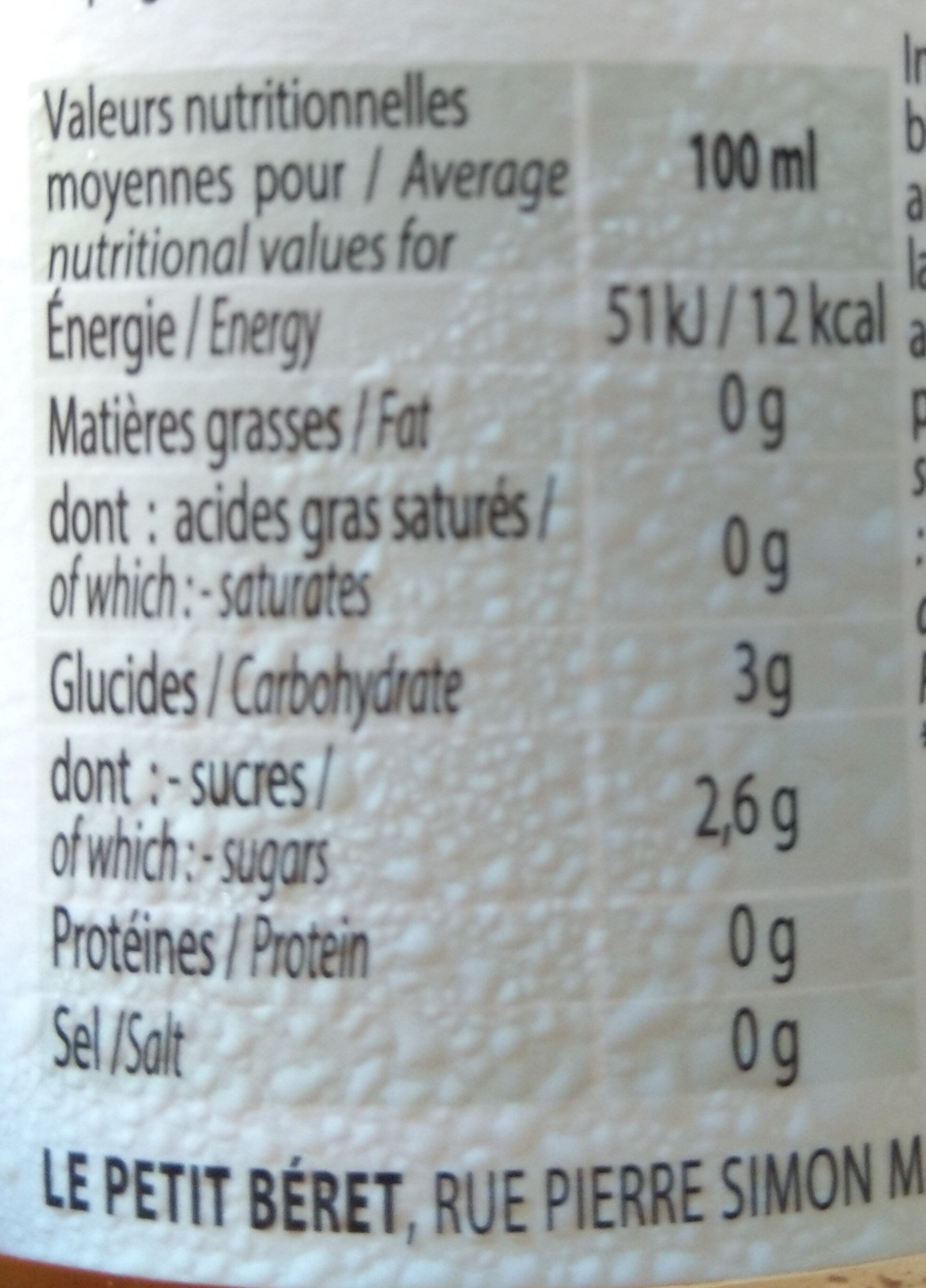Rosé Provencal - Petit Béret - 75 cl
This product page is not complete. You can help to complete it by editing it and adding more data from the photos we have, or by taking more photos using the app for Android or iPhone/iPad. Thank you!
×
Barcode: 3760251402448 (EAN / EAN-13)
Quantity: 75 cl
Packaging: Glass
Brands: Petit Béret
Categories: Beverages, Alcoholic beverages, Wines, Non-alcoholic beverages, Non-alcoholic wines
Labels, certifications, awards:
Organic, Vegetarian, EU Organic, Non-EU Agriculture, Pasteurized, Vegan, EU Agriculture, EU/non-EU Agriculture, FR-BIO-10, AB Agriculture Biologique

Manufacturing or processing places: France 34440
Link to the product page on the official site of the producer: http://www.lepetitberet.com
Countries where sold: France
Matching with your preferences
Environment
Packaging
Transportation
Labels
Report a problem
Data sources
Product added on by yd31
Last edit of product page on by roboto-app.
Product page also edited by kiliweb, openfoodfacts-contributors, packbot, yuka.sY2b0xO6T85zoF3NwEKvlkhiXIDesx7FMyLfh2GtnfeTI7nlXPAistnzDKs, yuka.sY2b0xO6T85zoF3NwEKvlmNZQ8DPsAjjCD35vXSRl-vQE8e5cN1i0Nf6F6s.










